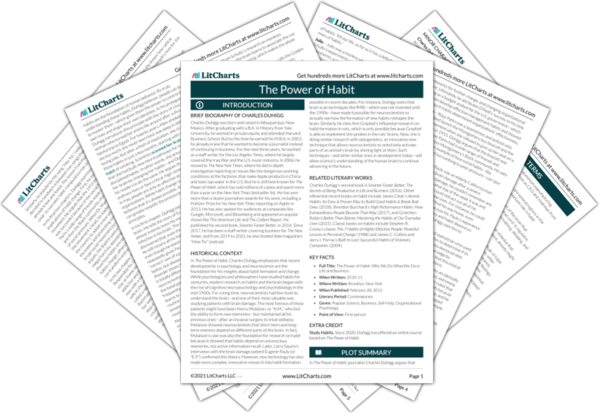Brain scans represent science’s power to give people control over their own destiny by revealing the secrets of human nature. Duhigg emphasizes that, in the last few decades, neuroimaging techniques have revolutionized science by allowing researchers to identify the links between specific behaviors and activity in specific areas of the brain. For instance, by scanning rats’ brains, MIT researchers learned about the basal ganglia’s role in habit formation and identified patterns of brain activity consistent with the cue-routine-reward habit loop.
These brain scans are the basis for Duhigg’s recommendations for habit change. Thus, they show how science’s remarkable new tools give people remarkable new tools for improving themselves. They also offer proof that self-improvement works. For example, Lisa Allen’s brain scans show how neural connections associated with new, better habits overrode the connections associated with her old, unhealthy ones.
At the same time, brain scans might appear to challenge people’s sense of free will by showing them how much of their neural activity is unconscious and beyond their immediate control. For instance, Reza Habib’s studies show that gamblers seem to continue playing because of unconscious processes in the basal ganglia, not because of conscious decisions. But in reality, it’s just the opposite. Brain scans don’t hamper human freedom—they unleash it. By giving people the knowledge they need to train their own brains and become the people they want to be, brain scans demonstrate how humankind’s technological innovations give people more and more control over their own fate.
Brain Scans and Studies Quotes in The Power of Habit
Prologue Quotes
When researchers began examining images of Lisa’s brain, they saw something remarkable: One set of neurological patterns—her old habits—had been overridden by new patterns. They could still see the neural activity of her old behaviors, but those impulses were crowded out by new urges. As Lisa’s habits changed, so had her brain.
Chapter 3 Quotes
Notice how closely this study hews to the Golden Rule of habit change: Even when alcoholics’ brains were changed through surgery, it wasn’t enough. The old cues and cravings for rewards were still there, waiting to pounce. The alcoholics only permanently changed once they learned new routines that drew on the old triggers and provided a familiar relief.












